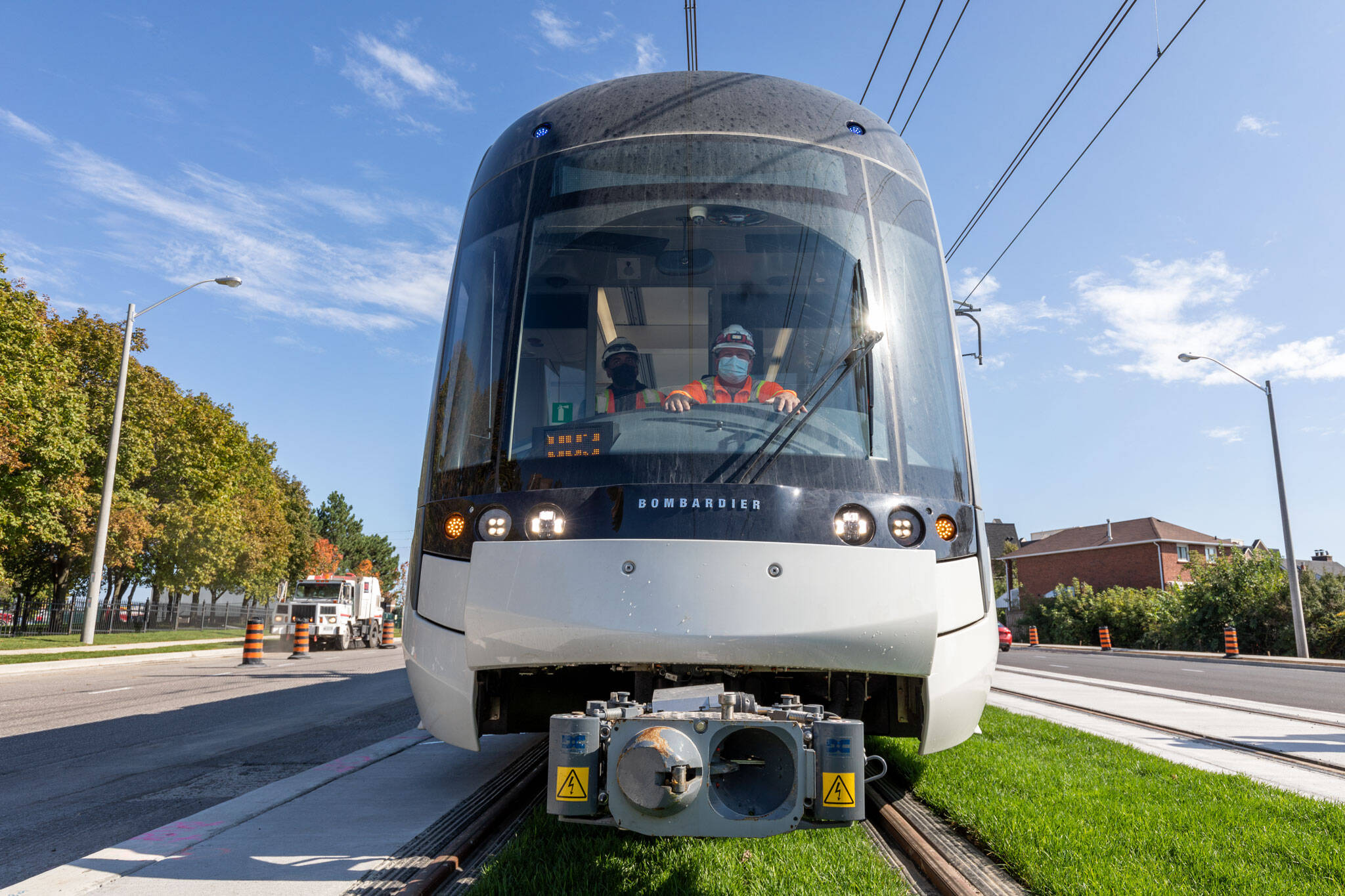
Someone claims a Toronto transit line will need to be split into two separate routes
Delays have defined the Eglinton Crosstown LRT's troubled construction, but one armchair transportation analyst is claiming that even after its expected 2023 opening, Line 5 will experience a new type of delay.
University of Toronto student and transportation planning expert Jedwin Mok has been voicing concerns about the line's upcoming operation, with a bold claim that the future Crosstown may eventually need to be split into two separate routes.
The initial 19 kilometres of track and 25 stops are set to enter commuter service within the next year, as construction begins on a western extension that will add another 9.2 kilometres and seven stops.
But it's the eastern surface stretch of Line 5 running in a designated right of way down the centre of Eglinton Avenue East that has Mok concerned, specifically its requirement to stop at signalized intersections to accommodate vehicle traffic.
Your daily reminder that @CrosstownTO will most likely have to be split into two separate lines a few years after opening because the transition from street running to grade separated ROW and lack of TSP will prove to be too unreliable and a heavy source of delays and bunching
— Jedwin Mok (@jedwinmok) March 20, 2022
As much of the line to the west operates underground and away from street traffic, trains will likely traverse the eastern stretch slower. "The travel times on the surface section of Crosstown can be so random since you can run into traffic lights, people jaywalking, and it's operated manually," says Mok, adding that "there's an inherent lack of reliability, especially without TSP."
"Now, when you compare that to the subway section, that's a very reliable section, since it's fully grade-separated and has automatic operations. So there's an inherent bottleneck at the transition point between subway and surface."
Citing other examples around the world, Mok suggests these speed discrepancies could result in the line being split in two at some point in the future.
"There are a lot of examples from other countries around the world of this happening," says Mok, explaining a recent case, "the Amstelveen Tram in Amsterdam, which used to be part of the larger metro network but had to be split."
Mok suggests that this could have been avoided with the use of transit signal priority, or TSP, a system integrated with traffic signals to give transit vehicles priority. While Metrolinx has implemented TSP on the Crosstown, it will only be used as a reactive measure to get trains back on schedule.
The limited use of TSP to correct a problem rather than prevent it is the result of a compromise between the city and Metrolinx.
"There was a Metrolinx engineer that commented they 'fought tooth and nail' to push everything out from the government," says Mok, though the city pushed back, Line 5 ending up with a watered-down version of TSP.
Mok says that while the Crosstown might be using modern technology, "the surface subway concept is not new and when executed without powerful traffic measures, it's unreliable."
In response to these claims, Metrolinx spokesperson Matt Llewellyn tells blogTO that the line's "priority approach is implemented at 15 at grade intersections – that is, the train control system will request priority whenever a train deviates from the scheduled operations."
He states that "Under normal operations, trains will be running to a schedule that has a margin of time built in to absorb minor delays. As such, the use of priority would not be required."
As for what this new route would be called? I vote Line 5.5.
Jack Landau
Latest Videos
Latest Videos
Join the conversation Load comments







